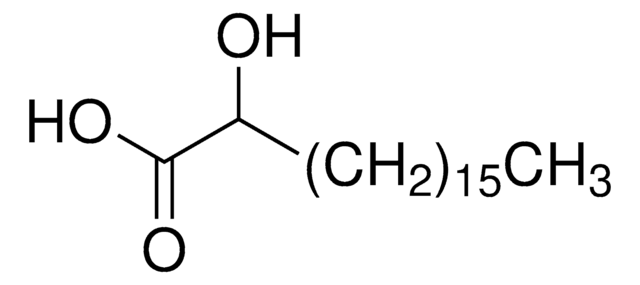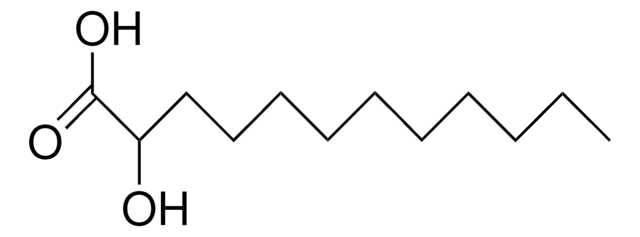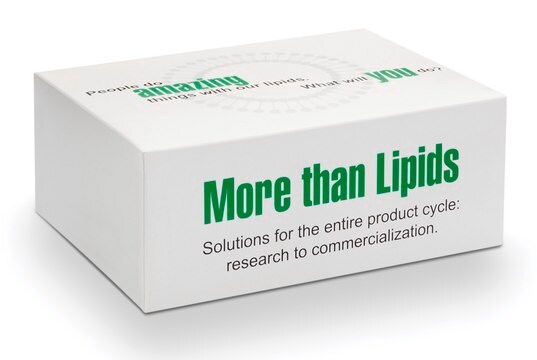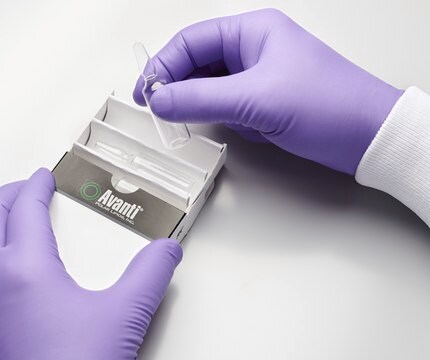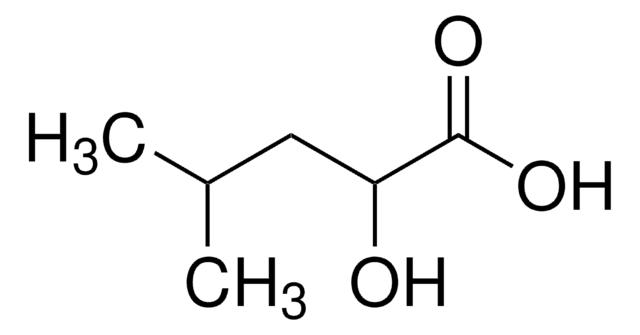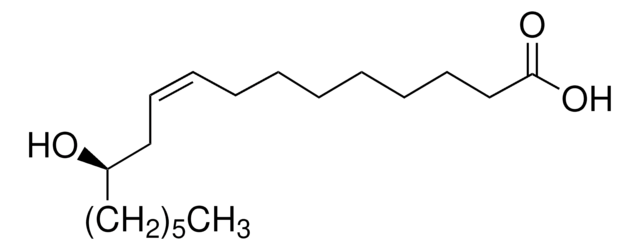H7021
2-Hydroxyhexadecanoic acid
≥98% (capillary GC)
Synonim(y):
2-Hydroxypalmitic acid, DL-α-Hydroxypalmitic acid
About This Item
Polecane produkty
Poziom jakości
Próba
≥98% (capillary GC)
typ lipidu
saturated FAs
temp. przechowywania
2-8°C
ciąg SMILES
CCCCCCCCCCCCCCC(O)C(O)=O
InChI
1S/C16H32O3/c1-2-3-4-5-6-7-8-9-10-11-12-13-14-15(17)16(18)19/h15,17H,2-14H2,1H3,(H,18,19)
Klucz InChI
JGHSBPIZNUXPLA-UHFFFAOYSA-N
Szukasz podobnych produktów? Odwiedź Przewodnik dotyczący porównywania produktów
Działania biochem./fizjol.
Kod klasy składowania
11 - Combustible Solids
Klasa zagrożenia wodnego (WGK)
WGK 3
Temperatura zapłonu (°F)
Not applicable
Temperatura zapłonu (°C)
Not applicable
Środki ochrony indywidualnej
Eyeshields, Gloves, type N95 (US)
Certyfikaty analizy (CoA)
Poszukaj Certyfikaty analizy (CoA), wpisując numer partii/serii produktów. Numery serii i partii można znaleźć na etykiecie produktu po słowach „seria” lub „partia”.
Masz już ten produkt?
Dokumenty związane z niedawno zakupionymi produktami zostały zamieszczone w Bibliotece dokumentów.
Klienci oglądali również te produkty
Nasz zespół naukowców ma doświadczenie we wszystkich obszarach badań, w tym w naukach przyrodniczych, materiałoznawstwie, syntezie chemicznej, chromatografii, analityce i wielu innych dziedzinach.
Skontaktuj się z zespołem ds. pomocy technicznej
